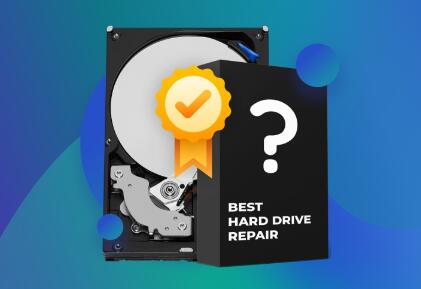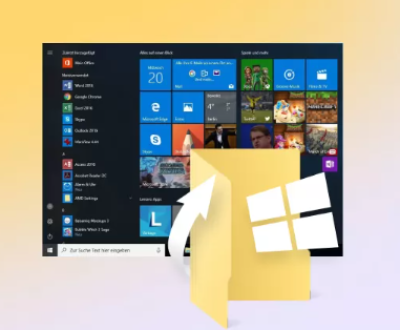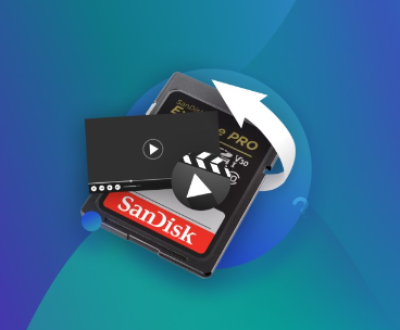A hard disk drive (HDD) is one of the most crucial components of any computer system. It stores everything from your operating system and software applications to personal files like documents, photos, and videos. Unfortunately, just like any piece of hardware, HDDs are prone to failure over time due to factors like wear and tear, physical damage, or software-related issues. When an HDD fails, data loss can be a major concern, especially if the hard drive contains essential information that hasn’t been backed up. However, the good news is that there are various tools and methods available to repair and recover data from a faulty HDD.
Hard Disk Drives (HDD)
Before diving into repair tools, it’s important to have a basic understanding of how hard disk drives work. An HDD consists of several key components:

Platter(s): Circular disks coated with magnetic material, where data is stored.
Read/Write Heads: Small arms that float just above the platter, reading and writing data.
Spindle: A motor that spins the platters.
Actuator: A mechanism that moves the read/write heads to the appropriate locations on the platters.
Controller Board: The circuit board that controls the drive’s functions, including data access, movement of the actuator, and communication with the computer.
Failures in HDDs can occur in two main ways:
Logical Failures: These are software-related issues like file system corruption, virus infections, or accidental deletions that make data inaccessible.
Physical Failures: These occur when there is physical damage to the hard drive, such as a malfunctioning motor, damaged read/write heads, or worn-out platters.
Types of Hard Disk Drive Repair Tools
The tools you use to repair a hard disk drive depend on the type of failure the drive has experienced. Some tools are geared toward fixing logical failures, while others are designed for addressing physical damage. Below are the various categories of repair tools for HDDs.
1. Software Tools for Logical Failures
These tools are used to fix problems that are not related to the hardware components of the HDD but instead stem from software or file system issues. Logical failures can be caused by factors like accidental deletion, corruption of file systems, partition errors, or software bugs. Here are some of the most commonly used software tools for repairing logical failures.
1.1. Data Recovery Software
Panda Assistant supports a wide range of file types, from documents and photos to videos, audio files, and more. It also allows for deep scans of your storage devices to uncover even the most challenging-to-retrieve files. This comprehensive approach increases the chances of a successful recovery, even when the data is seemingly lost beyond repair.
The software offers multiple recovery modes, including quick scan and deep scan, catering to different levels of data loss. Quick scans are fast and can retrieve files deleted recently, while deep scans are thorough and are typically used for more complicated recovery situations, such as recovering data after formatting or system failures.
1.2. Disk Repair Utilities
Disk repair utilities focus on fixing issues related to disk sectors and file system corruption. These tools typically scan the drive for errors and attempt to repair or mark the bad sectors. Some tools for disk repairs include:
CHKDSK (Check Disk): This built-in tool in Windows is one of the simplest ways to check and repair a drive. It scans for file system errors and fixes them by repairing or isolating bad sectors.
Mac Disk Utility: This utility is available on macOS and is used for repairing file systems and checking disk health.
SpinRite: SpinRite is a highly regarded disk repair tool for both physical and logical drive issues. It can fix bad sectors and recover data from failing hard drives.
1.3. Partition Management Software
Sometimes, an HDD may have a corrupted partition or an issue with its partition table. Partition management software can be used to repair or recover partitions and the data within them. Popular partition management tools include:
AOMEI Partition Assistant: A tool that can create, delete, resize, and repair partitions, as well as recover lost partitions.
Partition Wizard: Another partition manager that allows you to fix partition table issues and recover lost partitions.
2. Hardware Tools for Physical Failures
In cases where the hard drive has suffered physical damage, you may need specialized hardware tools to perform repairs or recovery. Physical failures typically occur when the drive’s internal components are damaged, such as a broken motor, malfunctioning read/write heads, or damaged platters. Below are some tools designed for such issues.
2.1. Disk Imaging Tools
Disk imaging tools are used to create an exact copy (or image) of the failing drive. This is crucial when the drive has physical damage, as it allows you to work on a copy of the data rather than the original drive. This can help prevent further damage and ensure data recovery. Some of the best disk imaging tools are:
DD (Data Description): A command-line tool available on Linux that can create bit-for-bit copies of drives. It’s widely used by professionals in data recovery.
Acronis True Image: A powerful disk imaging and backup tool for both home and business use. It allows you to create full disk images and recover data from those images.
Macrium Reflect: A tool for creating disk images and backups that can help recover data from damaged drives.
2.2. Drive Head Replacements
If the issue with your HDD involves damaged or stuck read/write heads, specialized tools are required to fix or replace them. However, replacing the read/write heads is an intricate process that often requires cleanroom facilities and should only be done by professional data recovery services.
2.3. Hard Drive Enclosures
A hard drive enclosure is an external casing that allows you to connect an internal hard drive to a computer via USB or eSATA. This tool can be used when the controller board of a hard drive fails but the rest of the drive is still intact. By placing the HDD in a new enclosure, you can bypass the broken controller and access the data.
Sabrent USB 3.0 to SATA/IDE Adapter: This is a popular and affordable tool that allows you to connect a failed drive to a computer and access the data.
2.4. Data Recovery Hardware Kits
There are specialized kits available for data recovery professionals who need to address serious physical damage to HDDs. These kits may include tools for:
Replacing broken parts like the controller board.
Fixing stuck platters or head arms.
Cleaning the drive’s internals to remove dust or debris.
These kits are usually expensive and require technical expertise to use effectively.
Choosing the Right Tool for the Job
The right tool to use will depend on the specific issue you’re facing with your hard disk drive. Here’s a quick guide to help you choose the appropriate repair tool:
Logical Issues: If you suspect that the problem with your HDD is due to software or file system corruption, then data recovery software (such as Recuva or EaseUS) or disk repair utilities (like CHKDSK) may be the solution.
Physical Damage: If the issue is due to physical failure, such as a malfunctioning motor or damaged read/write heads, you’ll need specialized tools like disk imaging software, drive head replacements, or even professional data recovery services.
Data Backup and Imaging: Regardless of the issue, creating a backup of your data using disk imaging tools (e.g., Acronis True Image) is a critical step in preventing further data loss.
About us and this blog
Panda Assistant is built on the latest data recovery algorithms, ensuring that no file is too damaged, too lost, or too corrupted to be recovered.
Request a free quote
We believe that data recovery shouldn’t be a daunting task. That’s why we’ve designed Panda Assistant to be as easy to use as it is powerful. With a few clicks, you can initiate a scan, preview recoverable files, and restore your data all within a matter of minutes.
Subscribe to our newsletter!
More from our blog
See all postsRecent Posts
- How to restore deleted images 2025-06-30
- How to restore a deleted file on windows 2025-06-30
- is there any way to restore deleted photos 2025-06-30

 Try lt Free
Try lt Free Recovery success rate of up to
Recovery success rate of up to









